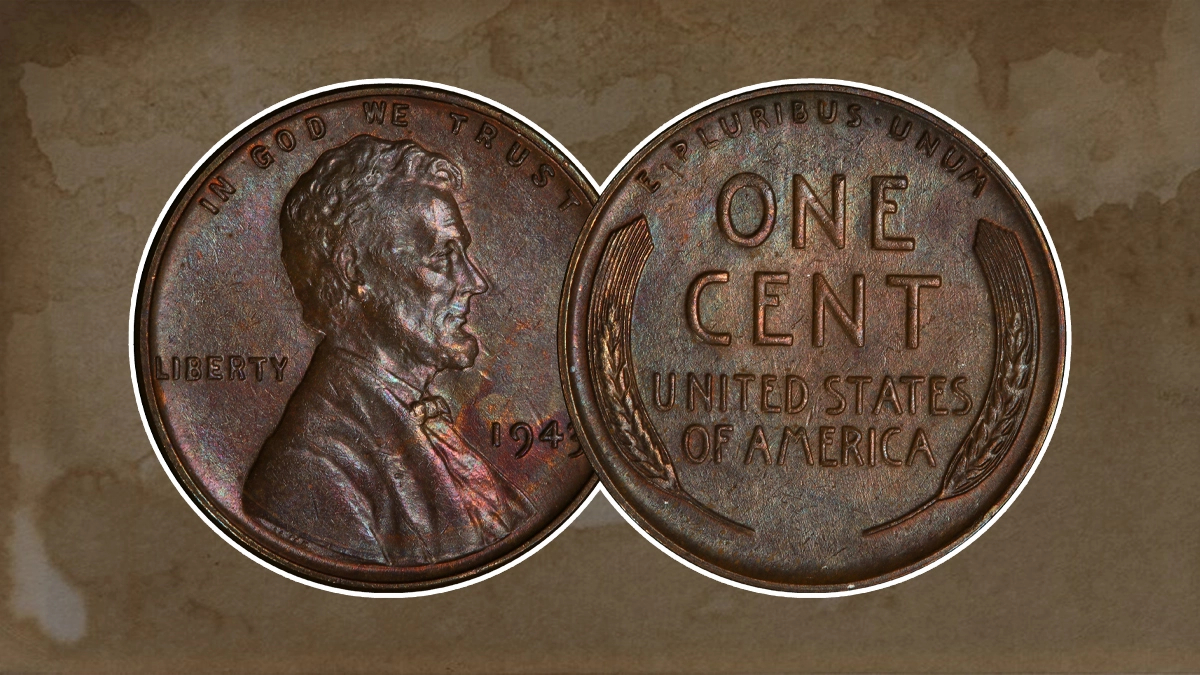
The 1943 Lincoln Cent, often referred to as the “Steel Cent,” stands out in American numismatic history due to its unique composition and historical significance. This guide delves into its introduction, history, specifications, design, rarity, and condition value, and provides a concluding insight into its place in coin collecting.
The 1943 Lincoln Cent is a remarkable coin, notable for its departure from the traditional copper composition used in previous years. Minted during World War II, this coin reflects the United States’ efforts to conserve essential metals for the war effort. Its steel composition and zinc coating were unprecedented and have made the 1943 Lincoln Cent a fascinating topic for collectors and historians alike.
History of 1943 Lincoln Cent
From 1909 to 1942, the Lincoln Cent was composed of 95% copper and 5% tin and zinc. However, in 1943, due to the critical need for copper in the war effort, the U.S. Mint made a significant change. For the first and only time, the cent was made from low-carbon steel coated with zinc. This decision was a stark contrast to the use of precious metals such as gold, silver, copper, and bronze.
Even before the United States entered World War II, there were concerns about the availability of copper and nickel, both crucial for minting coins. The attack on Pearl Harbor in December 1941 intensified these concerns. By January 1942, Treasury officials were considering alternative metal compositions for certain coins. The removal of tin from the cent’s composition in early 1942 saved 100,000 pounds of tin, but shortages persisted.
Throughout 1942, the U.S. Mint experimented with various materials, including metals, fibers, plastics, and even glass. On December 18, 1942, Public Law 77-815 authorized the use of metal substitutes for coins. By December 23, 1942, Treasury Secretary Henry Morgenthau, Jr. ordered that all cents produced after January 1, 1943, be made of low-carbon steel coated with zinc. The first steel cents were produced on February 23, 1943, at the Philadelphia Mint, followed by the Denver and San Francisco Mints.
The new steel cents were released into circulation on February 27, 1943. Despite assurances from the Treasury that the coins would gain a distinct appearance with use, the public immediately noticed their resemblance to dimes and their magnetic properties, which caused issues with vending machines and other mechanical devices.
Due to widespread public dissatisfaction, the Treasury limited the production of steel cents to 1943, and in 1944, the Mint returned to using a copper alloy sourced from spent shell casings.
Specifications
Composition: Low-carbon steel coated with zinc
Diameter: 19.05 mm
Weight: 2.70 grams
Edge: Plain
Mint Marks: Philadelphia (no mint mark), Denver (D), San Francisco (S)
Design
Obverse:
The obverse of the 1943 Lincoln Cent features the familiar bust of Abraham Lincoln, designed by Victor D. Brenner. Lincoln’s right-facing profile is accompanied by the inscriptions “IN GOD WE TRUST” above, “LIBERTY” to the left, and the date “1943” to the right.
Reverse:
The reverse, also designed by Brenner, displays two wheat ears flanking the inscriptions “ONE CENT” and “UNITED STATES OF AMERICA.” Above these, the phrase “E PLURIBUS UNUM” is inscribed.
Rarity and Condition Value
The 1943 steel cents are not rare in terms of total mintage, with over a billion produced across the three mints:
Philadelphia: 684,628,670
Denver: 217,660,000
San Francisco: 191,550,000
However, due to their unique composition, their condition can vary significantly. Many steel cents suffer from rust and corrosion due to their exposed steel edges. High-grade, uncirculated examples are much rarer and command higher prices. A 1943 steel cent in good condition can be valued between a few cents to several dollars, while those in mint state can range from $10 to over $50, depending on the mint mark and grade.
Also Read – 1937 Buffalo Nickel: A Guide for Coin Enthusiasts
Conclusion
The 1943 Lincoln Cent remains a unique artifact of World War II-era America, symbolizing the nation’s resourcefulness and adaptation during a time of global conflict. Its distinct composition and historical context make it a cherished piece for collectors. While not rare in numbers, its condition and the story behind its creation add significant value and intrigue, ensuring its place in the annals of numismatic history.
